[ad_1]
You’ve probably heard the term search engine optimization (SEO) a million times. But did you know that adding video to your website can drastically improve your SEO efforts and drive more people to your website?
It’s true! Video is quickly becoming one of the most important forms of content marketing and its presence could make or break your optimization efforts.
Before we break down exactly how video can improve your organic page ranking, let’s talk a little more about what SEO actually is.
What is SEO?
Search engine optimization is what you do to grow your visibility on search engine results pages. The higher your website ranks, the better—it means more people will see your page when they search a relevant query, click through to your website, read your content, and get to know your brand. It’s not an exact science, and the best practices change frequently, but optimizing your website content and structure could ultimately drive more conversions than any of your other digital marketing efforts.
The Importance of SEO for Business
In a noisy world, SEO is one of the best ways for businesses to be seen by their target audiences. Remember, when people use search engines, they’re doing a targeted search. They’re actively looking for what you’re offering, so making sure your site is the first one users see should be a crucial part of your digital marketing strategy.
A high ranking in search engine results can lead to increased traffic, brand awareness, and sales for a business. SEO can also help to establish a business as an authority in its industry, as well as improve the user experience of a website.
With improved content, better navigation structure, optimized images and faster loading times, customers are more likely to stay longer on your page, which increases the chances of them buying or availing your services. Additionally, with higher rankings on SERPs comes direct referral traffic from Google or other search engines that further helps boost sales conversions.
Local SEO for Small Businesses

Local SEO is a specific type of SEO that focuses on optimizing a website for local search results. This is particularly important for small businesses that rely on local customers. Optimizing for local SEO involves claiming local business listings, building citations, and getting listed in online directories.
This type of SEO is an important factor because it allows businesses to connect with potential customers who have already expressed an interest in the services or products that they offer. Optimizing a website for local search not only gives small businesses increased visibility, but also improves qualified leads, as customers will find them more easily when searching for specific keywords related to what they need. Furthermore, local SEO can help build brand awareness and credibility among those within the target market of the business by providing them with relevant information about what they offer and why they should choose them over any other competitors.
On-Page SEO
On-page SEO is of paramount importance in creating a successful website. It helps search engines understand the content on each page, which can significantly increase visibility and the likelihood of ranking higher on search engine results pages (SERPs). On-page SEO involves optimizing elements like title tags, alt text, headlines, URLs, meta descriptions, and internal links. Making sure these elements are optimized properly will make sure your website gets seen by more people and increases your chances of appearing in the top positions on SERPs.
In addition to SEO-specific factors, it is also important to focus on making quality content that is well-structured and easy to read for both humans and machines. Content should be tailored to the target audience’s interests and needs. Quality content should have keyword research done before writing so that topics are relevant to the target keywords; this helps ensure that search engines recognize the relevance of a given page and rank it accordingly.
Off-Page SEO
Off-page SEO is just as important as on-page SEO when it comes to optimizing a website for search engine results. It includes activities such as link building and social media presence, which can help increase the visibility and authority of a website. Building quality backlinks from other websites with high domain authority can be incredibly beneficial for increasing visibility in SERPs, as well as building credibility with potential customers. Link building helps to spread the word about your website and establish trustworthiness, since Google rewards websites that are seen by more people, have more links pointing to them, and are seen by other authoritative sources.
Additionally, having a presence on social media platforms can also help to grow visibility. By engaging with users online through comments and posts, you can create a loyal customer base that will share your content on their own social channels. This will lead to more traffic being driven to your site, which in turn increases the chances of ranking higher in SERPs. Social media marketing is also an effective way to advertise products and services by targeting specific audiences based on user interests or demographics. Not only does this drive traffic but it helps build relationships with customers and allows businesses to get real-time feedback from their target audiences.
If much of this information sounds somewhat familiar, you’ve probably taken some steps to boost your SEO. You may have created specific blogs and articles based on keyword research. You may have hired a technical SEO expert to help your pages index and crawl correctly.
What you may not know is that video can help your SEO ranking as well–in a very significant way.
Video and SEO
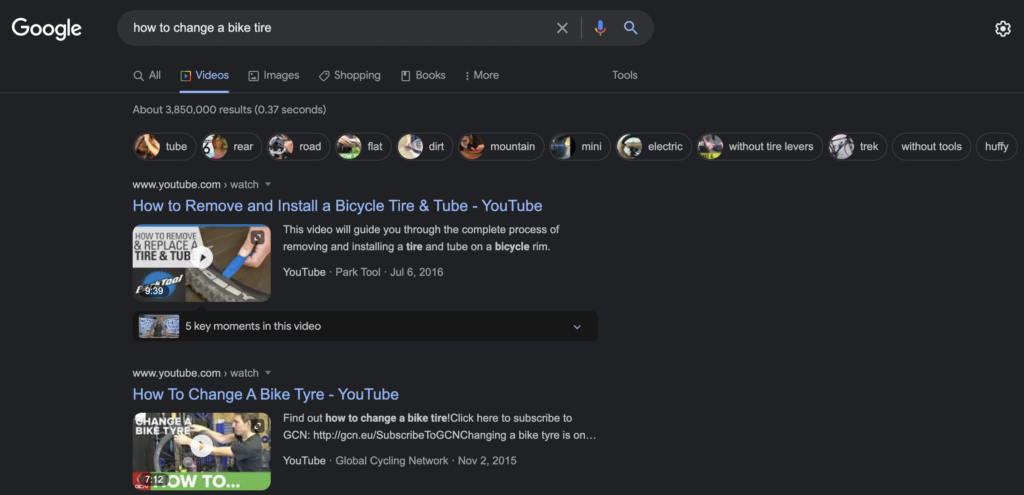
The basis of SEO is aligning your internal content strategy with what the search engine’s algorithm is prioritizing. And while we don’t always have transparency from Google to know exactly what they’re looking for, we do know that video is a powerful tool for SEO.
So, why does video help SEO rankings? Here’s what we know about the connection.
First, we know that when Google shows a video thumbnail next to a search result, which it does for 26% of search results according to BrightEdge, users are more likely to click that listing. The presence of the thumbnail makes the result a “rich snippet,” and rich snippets tend to have higher click-through rates than standard snippets.
We also know that Google has been rumored to prioritize search results with video above results without video. While Google hasn’t explicitly confirmed this idea, many marketers agree that their SEO results suggest that it’s true.
Our data at Lemonlight is no exception—almost all of our pages bringing in the most organic traffic include video content, and we typically see boosts in organic traffic ranging from 10% to a whopping 250% when we add video content to existing posts. We host our marketing-related videos on YouTube as well (find them all here), so we’re improving our SEO efforts while also bringing in new traffic directly from YouTube.
Which Metrics Can Video SEO Help?

Video also helps other metrics that we know Google takes into consideration for ranking. Two of the most important metrics for SEO are the time users spend on your page or site and the number of backlinks referring back to your domain, and video almost always improves both of these figures. Studies show that people spend over twice as long on a page with video than without, and the higher the quality of your content, the more likely you are to get backlinks.
So, video benefits SEO both directly and indirectly—the video alone likely influences your ranking, and it influences other factors that go into Google’s selection system.
In short, Google’s algorithms are increasingly prioritizing websites with video content, and that’s not something you want to ignore; 93 percent of online experiences start with a search engine, so you want to do everything you can to appear on that crucial first page.
How to Create High-Quality Video That’ll Boost Your SEO

The key to using video as part of your SEO strategy is to take the time to make high-quality content that’s aimed at a particular goal. After all, video alone isn’t necessarily your website’s saving grace.
Think of it as a cycle. Video gives you a boost in rankings, which allows more people to see your site, which means more people will click on your link. But, they won’t actually stay on your site very long if your on-page content isn’t high-quality.
As a matter of fact, this could be detrimental. Hosting a low-quality video with little or no context will make your rank plummet because the search engine doesn’t want to drive people to a useless page. At the start, more people may see your site in the SERPs, but if your page doesn’t satisfy their intent, they’ll quickly exit your page. This will increase your bounce rate (a metric we revealed earlier as one that Google prioritizes for SEO), telling Google that your page isn’t valuable. The end result? You’ll lose the ranking you just earned, and you might lose other rankings because your site now lacks authority in the eyes of Google.
Video SEO Tips
None of this is a concern if you put some time and thought into your production strategy. Luckily, we’re experts when it comes to video creation and we’ve got some tips for helping you optimize your video marketing efforts. Start ranking on SERPs with the following crucial tips.
1. Use videos on your website
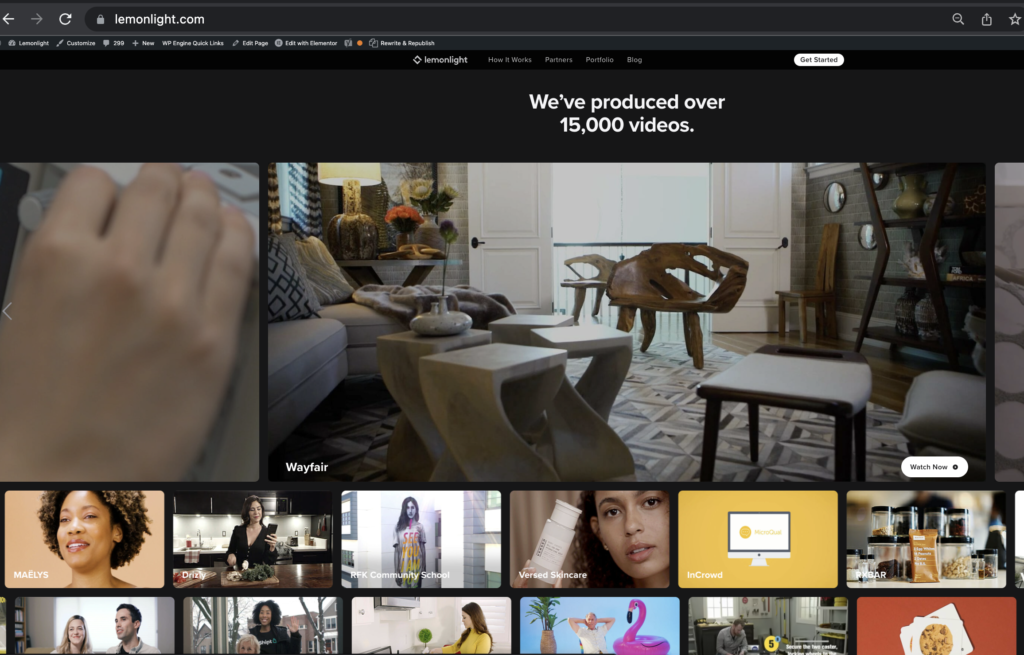
Creating videos isn’t enough—you need to actually publish your videos on your site. Just make sure that the placement makes sense. A brand video fits nicely into your “About Us” website page or your homepage. A product video is a great asset for your e-commerce platform or your website’s product descriptions. Testimonial videos are especially powerful and can work pretty much anywhere on your site. One bonus tip—while you’re distributing your video content for SEO purposes, you can repurpose the same content elsewhere to supplement the rest of your marketing strategy. Here are 20 places you might want to consider posting your video once it’s finished.
2. Give your video some context

Publishing your video on an otherwise blank page won’t do much. Be sure to embed your video where it makes sense, and surround it with other relevant written and visual content. You might even include a transcript of your video to target more keywords and turn any visual graphics used into a downloadable JPEG. The more Google can understand how your video fits into the content on-page, the better your results will be.
3. Be sure your video educates

If your potential customer has questions about your brand, services, products, or industry, then answering these questions will educate and empower them when making their purchasing decision. If you answer their questions continuously, you become an authority and gain credibility because of the value you provide. The search engines see this and start to boost your pages even more. Consider a Q&A video or a demonstration of your products in action for your product pages. You can also use video on educational pages like your blog to provide an alternative to reading long text. (Note the video at the top of the page on this article—we’re doing just that!)
4. Be consistent
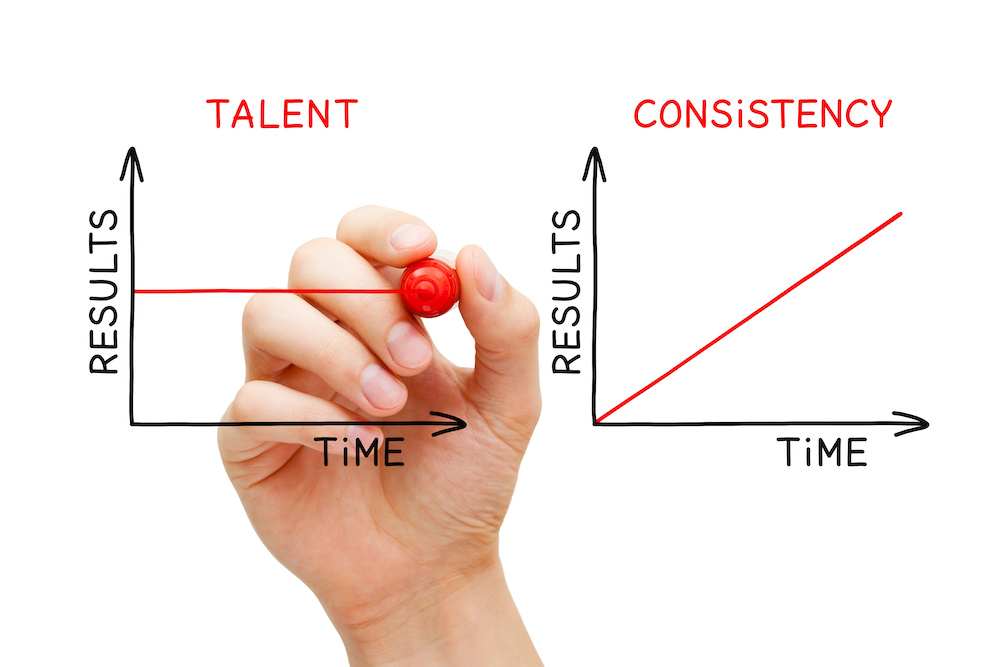
You can’t go to the gym one time and expect six-pack abs. The same goes for video marketing! Consistency and dedication are key. Work to consistently to provide value, and work at ranking not just for one keyword, but for numerous relevant keywords that match your customers’ search intent. The good news is that you’ll be motivated to create more content once you see how well it works!
What’s more, it can be difficult to track the success of any given SEO strategy. While some changes may have a positive impact on rankings right away, many times the true effects won’t be known until weeks or months later. This means that if you want to achieve long-term success with SEO, it’s essential that you continue executing the same strategies over a sustained period of time. This consistency allows search engines to recognize that your site is trustworthy; as they evaluate your content more often and see evidence of ongoing optimization efforts, your position in the SERPs should begin to improve. In addition, by consistently creating fresh content for users—such as high-quality videos—you keep them coming back for more. This increases both user engagement and overall ranking power for your website or blog.
5. Use Video Transcripts
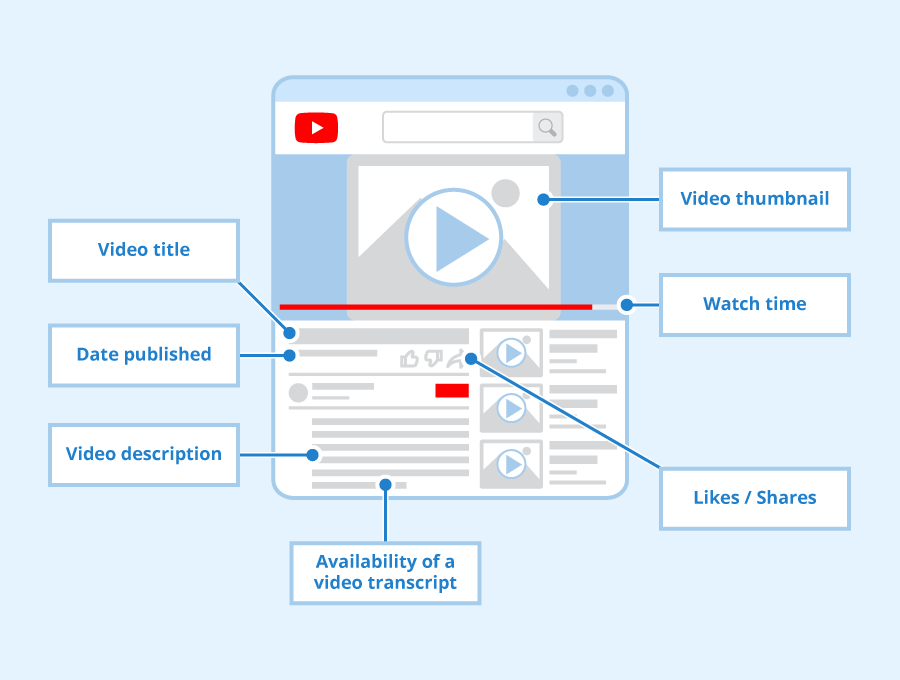
Inserting video transcripts into videos helps make them more “findable” by search engines. This is because transcripts provide a written resource with which search engine algorithms can identify and index the content within the video. By including a transcript, the content and subject matter of a video can be made more accessible to both viewers and search engines alike.
Aside from this, transcripts also make videos more accessible for people with disabilities who may not be able to watch or understand audio-only content. Moreover, having transcripts available allows viewers to quickly scan through the topics discussed in the video and quickly grasp main points without having to watch all of it. This makes watching your videos easier and quicker overall, further boosting visibility on SERPs and increasing viewer engagement as well.
6. Leverage Paid Video Advertising
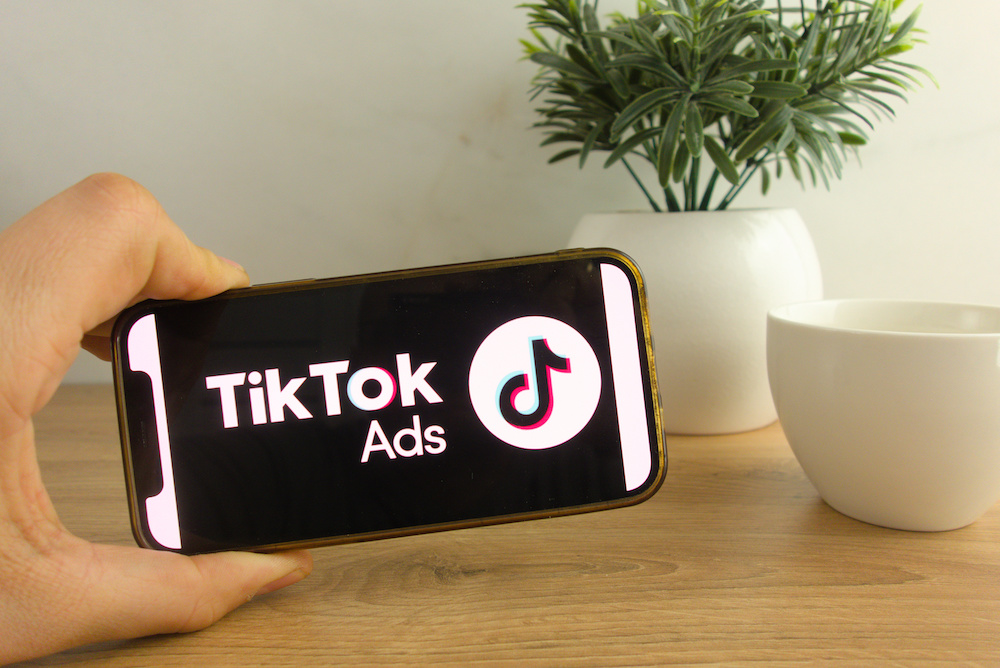
Platforms like TikTok, Facebook, and Instagram are great for paid promotions due to their high user engagement and appealing visuals. With Google’s SEO algorithm constantly changing, it has become difficult to rely solely on SEO for videos. Paid video advertising helps ensure that your content is seen by the right people who would be interested in your product or service. It also provides better ROI than relying purely on organic promotion as paid ads allow for more targeted audiences.
Moreover, with platforms like YouTube, you can get more detailed analytics about who is watching your videos, from which region they come from, and how much time they spend viewing it. This can help gain valuable insights into what types of videos work best with different audiences and allows businesses to focus their efforts and resources on the most effective marketing strategies. Overall, paid video advertising is a powerful tool that should be incorporated into any company’s marketing strategy in order to reach the right target audience and maximize return on investment.
7. Don’t forget the technical details

Uploading your video to a site like YouTube or Vimeo is just the beginning. Don’t forget to enter the right information on the backend so search engine crawlers know how to categorize and prioritize your video.
YouTube uses various information to create your ranking:
- Title tag information
- Audience retention
- Keywords in description tag
- Tags
- Video length
- Number of subscribers after watching
- Comments
- Likes and dislikes
Not every one of these is entirely in your control (like comments and subscribers, for instance), but work on the ones you can control so you know you’ve done everything in your power to help your video rank.
Tips From an SEO Expert
We also asked Eric Enge, SEO expert and founder and CEO of Stone Temple Agency, what his number one tip for SEO would be and how video can help give your pages a boost. Here’s what he had to say!
There are a growing number of queries that contain some level of video content in them. The positions occupied by videos in those results are basically not available for regular web pages. This creates a great opportunity for you, where you can compete to get into those SERPs two different ways: with your regular web pages, and separately with your videos.
However, the first thing to realize is that Google is far more likely to rank videos hosted on YouTube. If you want your videos to rank in Google search, hosting them on YouTube is your best bet.
YouTube is a very large search engine in its own right. You can earn significant traffic to your videos from people that perform searches on YouTube, and while that traffic goes to the video, and not your site, this still offers powerful branding opportunities.
However, Google and YouTube rank videos differently. YouTube does use the metadata (title, description, categories) that you enter for the video to determine relevance and then uses view time-related metrics to determine rank.
To be specific, YouTube looks at the total time spent on YouTube. It doesn’t matter whether or not all the videos watched are from your account or not. If someone starts with your video and goes on to watch videos from other channels, this still accrues to your benefit.
Google uses a much more traditional set of algorithms to rank videos. The metadata you enter still matters here, but so do links to the video itself. To rank well in both search engines, you need to:
- Create compelling videos that people want to watch (ideally to the end) and that are worth linking to.
- Create videos that lead to people wanting more video.
- Leverage playlists that people want to use to guide their viewing. Don’t be afraid to include videos from other channels in your playlist.
- Embed the video on your own site.
- Get people to embed your videos to drive more view time to them.
- Consider paid campaigns to drive more view time into your video.
- Promote the video via multiple channels to drive more view time, and to potentially attract links to the videos.
- And, of course, be very thoughtful about how you implement the metadata for the videos you create!
There you have it! According to Neil Patel, video SEO is still underutilized, so now is a great time to get started. If you need help creating a video strategy to improve your SEO rankings, our expert video strategy team can work with you to find the perfect solution. Just click below to schedule a FREE call with our team, and make sure to subscribe to our blog for more video marketing tips and tricks.
Related eBook: 8 Ways to Effectively Distribute Your Video Content
[ad_2]
Source link










